|
|
|
|
|
This review page is supported in part by the sponsors whose ad banners are displayed below
|
|
 |
|
Octave's packing deserves mention for its meticulous - well, yes... engineering. There's boxes within boxes and even the laudably comprehensive owner's manuals come in nice velcro-snap plastic folders, with a QC check list signed off by an employee. Mechanical engineering (how things go together) is in full evidence again once you unbolt the V80's tube cover via the included long-stem hex key to marvel at how cleverly the sheet metal has been bent to assume the desired shape. Felt pads in strategic locations avoid metal-to-metal contact. Neat. |
|
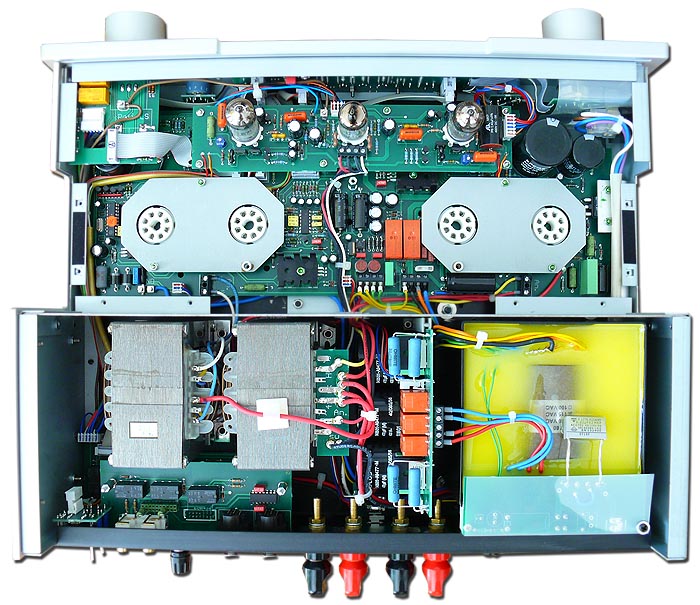 |
|
|
This image opens to 1850 x 1600 at 424KB in a new window
|
|
|
 |
|
The BAT-PAC reminiscent optional capacitance upgrade via the external box encloses six boffo muscle caps whose outputs are bolted thru the circuit board. The umbilical is nicely long, flexible and terminated with a stout twist-lock connector. Since this isn't a power supply per se -- the mains transformer remains in the amplifier -- there is no direct AC connection to the wall from the add-on Modul. It simply loops into the circuit via the 4-pin connection. Simple and efficient.
|
|
|
|
Precision bias adjustments, as already described, are a cinch. As an extra nicety, the trim pots are lit when bias mode is engaged. Simple and efficient again.
|
|
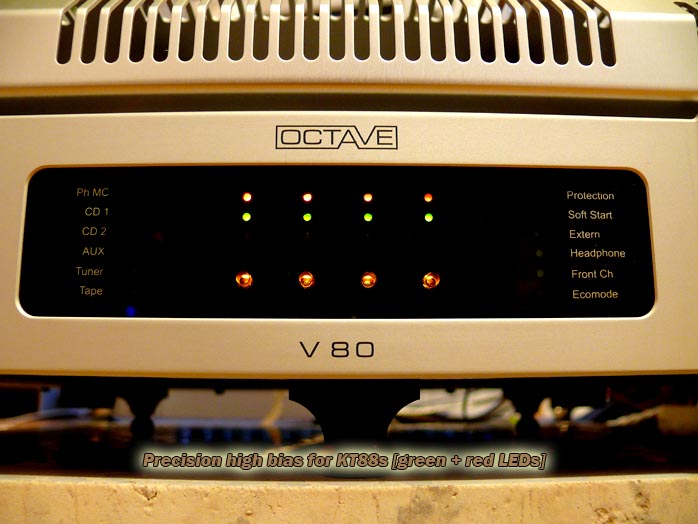 |
|
Naturally, the remote is a classy programmable touch screen with four AAA batteries and blue-green backlighting. The V80's remote volume function is preset for AUX and the equivalent two hard controls for volume +/- do the business. There is no remote 'mute', position indicator for the volume or input switching. Naturally, you could program your current sources to run off Octave's remote and discard the other clickers to that cluttered drawer.
|
|
|
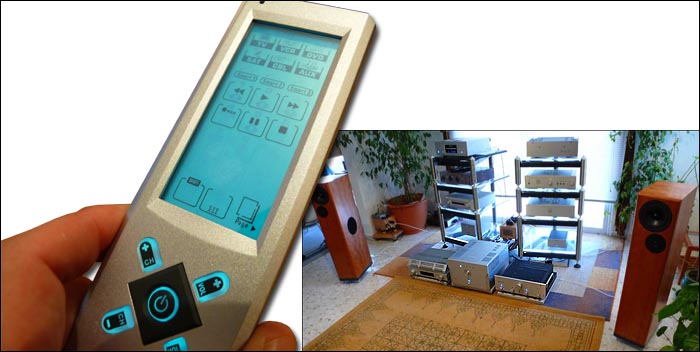 |
|
When running the V80 in "Master In" mode from its companion preamp, its volume control is not bypassed. This cleverly retains gain offset options for biamp scenarios. However, because the same remote code operates the attenuators for both preamp and integrated, you'll have to deliberately block the infrared signal to one or you'll change two pots in lock step. The volume taper over my 91dB DeVore Nines was nicely gradual.
|
|
 |
|
|
This image opens to 2000 x 866 at 288KB in a new window
|
|
|
The winged binding posts are a pleasure to operate, accept stacked spades for biwiring and, like everything else about this product, demonstrate high attention to detail and a solid commitment to quality without charging the really long green luxury tax where you'd have every right to expect those details (but still don't always get 'em).
|
|
 |
|
|
When Andreas described his power transformer as being potted, the man wasn't joking. He simply forget to mention that he used Lemoncello. Kidding aside, the V80, just like the HP500 SE, is mechanically and electrically superbly quiet like superior transistor machines. That's no joke.
|
|
 |
|
|
The small-signal tubes ship preinstalled, the four power tubes and spare separately.
|
|
|
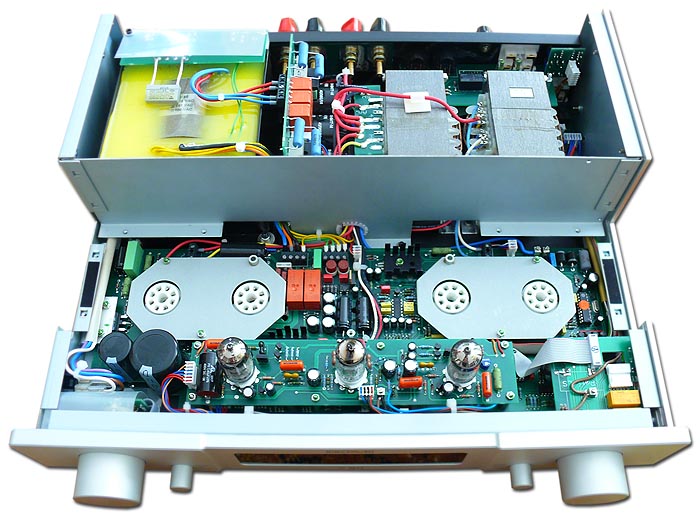 |
|
|
This image opens to 1900 x 1400 at 296KB in a new window
|
|
|
Unusually, the headphone socket is located on the rear apron below the speaker terminals. The toggle used to send signal to the ¼" jack too is 'round back. Two vertical rows of green pin lights on the front panel confirm chosen inputs and various operational choices. Should the amp not do what you thought it should, it'll tell you what you've really told it to do in a pretty fool-proof manner. This "tubes for dummies" approach has been implemented intelligently and without undermining aesthetics or introducing operational clumsiness to prove it is possible to have it all. Simple and efficient. Did I already say this stuff was German?
|
|
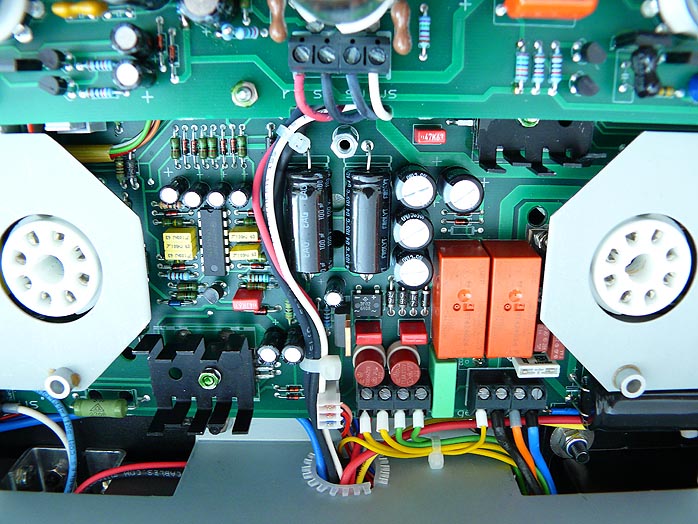 |
|
|
|
|
|
|
|
 |
 |
|
|
 |
|
|
|
|
|
|
|
|